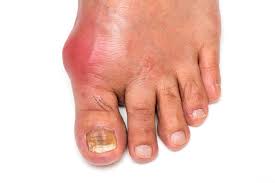
Pseudo-gout is a type of arthritis that is caused by the buildup of calcium pyrophosphate crystals in the joints. It is called “pseudo” because it is similar in presentation and symptoms to gout, but the crystals involved are different.
The symptoms of pseudo-gout are similar to those of gout, including sudden onset of joint pain, swelling, and warmth. Pseudo-gout most commonly affects the knees, but it can also affect other joints such as the ankles, wrists, and shoulders.
Risk factors for pseudo-gout include older age, joint injury, and certain medical conditions such as hyperparathyroidism and hemochrombtosis. The diagnosis of pseudo-gout is typically made by analysing joint fluid obtained through a joint aspiration procedure.
Treatment of pseudo-gout may include non-steroidal anti-inflammatory drugs (NSAIDs) to relieve pain and inflammation, as well as colchicine or corticosteroids to reduce inflammation and prevent further crystal formation. In some cases, joint aspiration or surgery may be necessary to remove excess fluid or damaged tissue.
Pseudo-gout is a chronic condition that can cause significant pain and disability, so it is important to work with a healthcare provider to develop an individualised treatment plan to manage symptoms and prevent complications.
